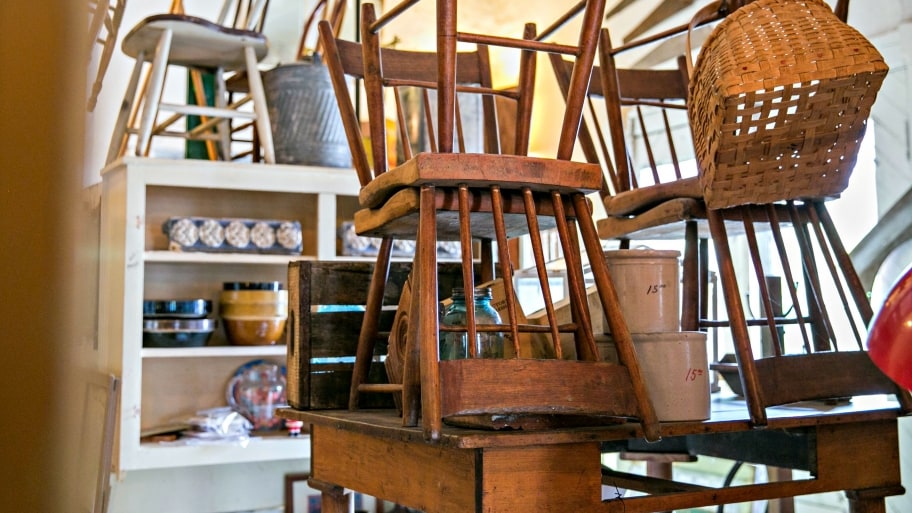|
Taking good care of your furniture is much easier than most people think and when done properly, your quality wood furniture will be enjoyed by generations to come.
To maximize the life of your fine pieces, be proactive. Sometimes it’s tough to follow all of these guidelines but it’s definitely worth a try. Avoid Most Advertised Polishes
Don’t use Pledge! Most furniture polishes you pick up from the supermarket have silicone in them. They may look great but over time, this material creates a slick surface tension and will eventually have a blotchy appearance, leaving smudge marks when handled. House cleaners love to use the stuff because it makes all your furniture shiny and they think that makes you happy. Have a conversation with your house cleaner and be sure they you know what they are using on your fine pieces.
Use This Instead
No Extreme Changes in Temperatures or Humidity
Be conscious of drastic changes in temperature or humidity that can quickly cause damage to your furniture. Avoid damp or humid areas and do not use storage facilities that are not temperature and humidity controlled.
Lift, Don’t Drag
This one might seem obvious at first, but there’s a few things that don’t come right to mind. Small scratches are bound to happen over time from normal use but why not avoid this as much as possible by always lifting objects instead of dragging them across your furniture’s surface. You should also be using protective pads to protect your furniture from plastics, warm items, vases, etc. Also, it’s very helpful rotate any accessories you have on furniture surfaces so they are not sitting in one spot all the time.
Blot, Don’t Wipe
Let’s be honest, no matter what you do, accidents will happen. Clean up spills immediately and don’t wipe liquids across the surface of your furniture. Instead, get an absorbent cloth and use a blotting action. Liquids left over a long period of time will probably damage the finish, so you’re working against the clock here. Also remember that alcohol, perfumes, nail polishes, etc. may cause severe damage and will most likely need professional attention, but minimizing the damage is always worth it.
Dust Regularly
Maybe we should’ve mentioned this one first… Use a clean, soft cloth and always dust in the direction of the grain. Dampening (not wetting) the cloth can help you cling on to any surface dust. Microfiber cloths are also great as they hang on to the dust instead of just moving it across the surface. Don’t forget to dust every nook and cranny, even the places you can’t see. Dust can accumulate in hidden areas, and really have an effect on air quality. This is specifically important in bedrooms, so grab a step-stool or ladder and clean the top, hidden parts of your wardrobes and cabinets.
HINT: Line the tops of your wardrobes and cabinets with parchment paper or newspaper. It won’t be visible and after dust accumulates, you can just cover it with a new layer and fold the corners towards the middle. Throw it away and replace. Easy! Get in Touch with a Professional
Contact your local furniture refinisher. Sometimes, it’s helpful to apply a polish or wax once or twice a year and they can help you figure out what the best polish is for your specific finish.
Our Favorite Products
Comments
|
Follow UsBlogAntiques & Furniture Restoration has been providing the highest quality furniture refinishing, upholstery and repair services available to the Washington area for over 25 years. ArchivesCategories |
Antiques & Furniture Restoration Inc
45945 Trefoil Ln Ste 172
Sterling, VA 20166
United States
Tel: 703-437-7446Sterling, VA 20166
United States
Email: [email protected]
Mon-Fri 11am - 6pm
Sat 12pm - 6pm
© Copyright Antiques & Furniture Restoration Inc. 2023. All Rights Reserved.
Furniture Refinishing Antique Restoration Antique Upholstery
Check Out Our Neighbor: Marvel Designs Fine Furniture
Designed by: VEOFY
Furniture Refinishing Antique Restoration Antique Upholstery
Check Out Our Neighbor: Marvel Designs Fine Furniture
Designed by: VEOFY
Service Areas
Providing Antique Restoration, Refinishing & Upholstery Services in the Washington DC, Maryland and Virginia areas including but not limited to:
|
MARYLAND
Howard County, MD Montgomery County, MD Annapolis, MD Baltimore, MD Bethesda, MD Cabin John, MD Chevy Chase, MD Clarksburg, MD Clarksville, MD College Park, MD Crofton, MD Darnestown, MD |
Derwood, MD
Frederick, MD Gaithersburg, MD Germantown, MD Greenbelt, MD Ijamsville, MD Kensington, MD Laurel, MD Laytonsville, MD Lutherville, MD Montgomery Village, MD Mount Airy, MD North Bethesda, MD |
Owings Mills, MD
Pikesville, MD Poolesville, MD North Potomac, MD Potomac, MD Prince Georges, MD Reisterstown, MD Rockville, MD Rosemont, MD Severn, MD Silver Spring, MD Takoma Park, MD Timonium, MD |
Upper Marlboro, MD
Wheaton, MD VIRGINIA Alexandria, VA Annandale, VA Arlington, VA Ashburn, VA Burke, VA Centreville, VA Chantilly, VA Clarendon, VA Crystal City, VA Fairfax, VA |
Falls Church, VA
Great Falls, VA Herndon, VA Leesburg, VA McLean, VA Oakton, VA Reston, VA Rosslyn, VA Springfield, VA Sterling, VA Tysons Corner, VA Vienna, VA |







 RSS Feed
RSS Feed